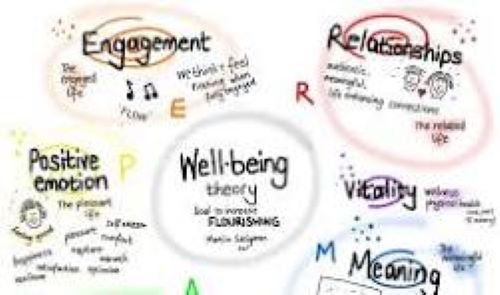Marty Seligiman
Have you creative people lost your mojo during Covid? Could you use a little help in regaining your motivation? Try PERMA
Marty Seligman started it – learning more about him from wikipedia
Martin Elias Peter Seligman (/ˈsɛlɪɡmən/; born August 12, 1942) is an American psychologist, educator, and author of self-help books. Seligman is a strong promoter within the scientific community of his theories of well-being and positive psychology.[1] His theory of learned helplessness is popular among scientific and clinical psychologists.[2] A Review of General Psychology survey, published in 2002, ranked Seligman as the 31st most cited psychologist of the 20th century.[3]
Seligman is the Zellerbach Family Professor of Psychology in the University of Pennsylvania‘s Department of Psychology. He was previously the Director of the Clinical Training Program in the department, and earlier taught at Cornell University.[4] He is the director of the university’s Positive Psychology Center.[1] Seligman was elected president of the American Psychological Association for 1998.[5] He is the founding editor-in-chief of Prevention and Treatment (the APA electronic journal) and is on the board of advisers of Parents magazine.
The PERMA Model represents the five core elements of happiness and well-being designed by American psychologist and educator Martin Seligman. PERMA stands for Positive Emotion, Engagement, Relationships, Meaning, and Accomplishments.
- Positive Emotion – it takes a little more work to see the silver lining. – but there are tools to use to gain that positive Emotion.
- Engagement – being engaged in doing something exciting – sewing, quilting, crafts
- Relationships –see friends and have face to face conversations
- Meaning – Do meaningful work which is different for everyone.
- Accomplishments. –.Things we do because we love to do them.’
It’s a great model to check on yourself – especially when you are feeling less than creative and without spirit.
How Humor Can Lighten the Room
A smile can make your design pitch twice as memorable. Humor, when done right, isn’t about being a comedian it’s about being human. A little laughter reminds everyone that design is supposed to bring joy, not stress. So the next time you walk into a presentation, bring your sense of humor along with your fabric swatches. You’ll leave behind not only a beautiful concept but also a positive impression.
Creating Connection: The overlooked power of eye contact
Eye contact is the designer’s secret to presence. It’s what transforms a presentation from mechanical to magnetic. Slides may show your ideas, but your eyes show your confidence and that’s what clients and audiences remember most.
Why Every Designer Should Practice Their Speech
In design, presentation is persuasion. When you practice speaking as much as sketching, you build trust, authority, and excitement around your ideas. A polished pitch can make the difference between a “maybe” and a “let’s do it.” Remember your voice is part of your professional toolkit. Use it well, and let it sell your vision as powerfully as your designs do.
NETWORKING …. WHAT HAPPENS AFTER
Networking is more about follow-up than first impressions.
Sound as Good as You Look
Trade shows can showcase your talent and brand but shouldn’t cost you your voice.
The Designer’s Elevator Pitch:
If you can’t explain your vision in a minute, you’ll lose the moment. In the world of design, opportunities often appear unexpectedly,a quick chat at a showroom, a brief meeting at a networking event, or a chance encounter with a potential...








